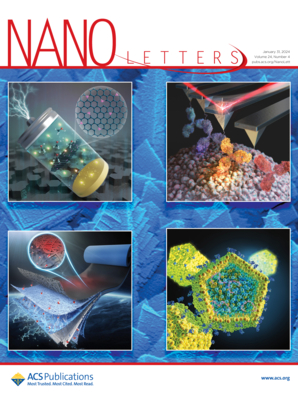用于锌水电池的锌阳极人工突起工程
IF 9.6
1区 材料科学
Q1 CHEMISTRY, MULTIDISCIPLINARY
引用次数: 0
摘要
不可控的枝晶生长会危及水锌电池的循环寿命。在此,我们提出了在电极表面设置工程人工突起的一般策略,以调节电极界面电场的分布,诱导锌电池稳定镀/剥离锌。采用超快焦耳加热焊接法在铜箔上构建了无结AP-Cu网络。COMSOL模拟表明,在单个AP周围形成了较强的微电场,可以有效地调节Zn在AP- cu网络上的均匀形核。基于AP设计的结构优势,AP- cu∥锌电池在2℃下的平均库仑效率(CE)为99.85%,面积容量为1.77 mAh cm-2,循环次数超过3000次。此外,该AP设计可以实现Zn|AP- cu∥V2O5和无阳极AP- cu∥Br2全电池的稳定循环,为高性能储能设备的开发提供了一种有前途的策略。本文章由计算机程序翻译,如有差异,请以英文原文为准。

Engineering Artificial Protrusions of Zn Anodes for Aqueous Zinc Batteries
Uncontrollable dendrite growth can jeopardize the cycle life of aqueous Zn batteries. Here, we propose a general strategy of engineering artificial protrusions (APs) on the electrode surface to regulate the distribution of the electrode interface electric field and induce stable Zn plating/stripping for Zn batteries. The junction-free AP-Cu network is constructed on Cu foil by an ultrafast Joule-heating-welding method. COMSOL simulation reveals that a stronger microelectric field is formed around the individual AP, which can effectively regulate a uniform nucleation of Zn on the AP-Cu network. Guided by the structural advantages of the AP design, the AP-Cu∥Zn cell delivers an average Coulombic efficiency (CE) of 99.85% at 2 C with an areal capacity of 1.77 mAh cm–2 for over 3000 cycles. Moreover, the AP design enables stable cycling of both Zn|AP-Cu∥V2O5 and anode-free AP-Cu∥Br2 full cells, providing a promising strategy for the development of high-performance energy storage devices.
求助全文
通过发布文献求助,成功后即可免费获取论文全文。
去求助
来源期刊

Nano Letters
工程技术-材料科学:综合
CiteScore
16.80
自引率
2.80%
发文量
1182
审稿时长
1.4 months
期刊介绍:
Nano Letters serves as a dynamic platform for promptly disseminating original results in fundamental, applied, and emerging research across all facets of nanoscience and nanotechnology. A pivotal criterion for inclusion within Nano Letters is the convergence of at least two different areas or disciplines, ensuring a rich interdisciplinary scope. The journal is dedicated to fostering exploration in diverse areas, including:
- Experimental and theoretical findings on physical, chemical, and biological phenomena at the nanoscale
- Synthesis, characterization, and processing of organic, inorganic, polymer, and hybrid nanomaterials through physical, chemical, and biological methodologies
- Modeling and simulation of synthetic, assembly, and interaction processes
- Realization of integrated nanostructures and nano-engineered devices exhibiting advanced performance
- Applications of nanoscale materials in living and environmental systems
Nano Letters is committed to advancing and showcasing groundbreaking research that intersects various domains, fostering innovation and collaboration in the ever-evolving field of nanoscience and nanotechnology.
 求助内容:
求助内容: 应助结果提醒方式:
应助结果提醒方式:


